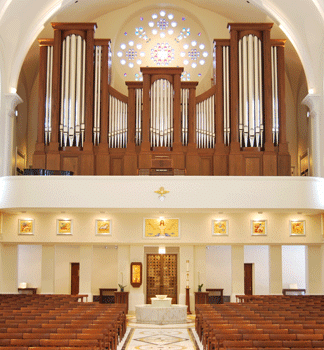
Madonna della Strada Chapel, Loyola University, Chicago, Illinois, announces its 2019–2020 Third Sunday @3 Organ Concert Series:
October 20, Johann Vexo;
November 17, Naomi Rowley;
December 15, Agnieszka Kosmecka;
January 19, 2020, Kipp Cortez;
February 16, Charlie Sega;
March 15, Solena Rizzato;
April 19, Laura Bottei;
May 17, John Weit.
The chapel is home to Goulding & Wood's Opus 47, of three manuals and 70 ranks.
For information: www.luc.edu/organ.

